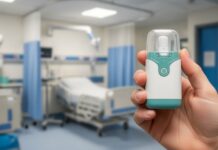Medical sensors have a huge role in fostering the progress of the medical field and making it possible to treat various critical diseases that were otherwise impossible. With the help of medical sensors, doctors can now diagnose and treat a critical disease effectively. These sensors are a crucial part of various medically invasive devices.
Here are some key advantages of medical sensors-
- Medical sensors help doctors access various critical areas of the human body that were earlier impossible to access. For instance, now doctors can insert a medical sensor into a person’s veins and access a particular area to know the condition of the area.
- In cryo cancer treatment, medical sensors have significant applications. From freezing and heating the tumours to eventually eliminating them, medical sensors are useful.
- Doctors can identify the disturbances in body functioning and treat them with the help of medical sensors.
- Sensors are also essential to lessen the implants’ energy consumption and boost their lifespan.
How to Build Medical Sensors?
Medical sensors are made of electromagnetic micro-coils with specific electromagnetic properties. The electromagnetic properties of the micro-coils help sensors to function. These coils are produced through the coil winding process. Manufacturers use ultra-fine electrically conductive wires to produce the micro-coils. They insulate the wires properly and then wind them around a support, core, or pin.
The use of 8-micron ultra-fine wires is essential to manufacture coils of tiny size. However, when it comes to connecting two ultra-fine wires during the coil production process, manufacturers face a significant challenge. Traditional soldering and welding methods can not provide effective connections for these ultra-fine wires. The major drawbacks of these connectivity methods are inferior connectivity solutions, damage to the wires, corrosion, physical strain, and extreme heat spreading. The only superior connectivity method that can overcome the drawbacks of the welding and soldering method and offer an excellent connectivity solution for ultra-fine wires is the Thermo Compression Bonding method. This method is useful to obtain corrosion-free, highly reliable, and strain-free connections.
After the coil winding process, medical coils should go through several quality tests to check whether coils are able to meet the high standards for medical sensors. By using the high-quality micro-coils, manufacturers then develop medical sensors.
Manufacturing Requirements for Medical Sensors
To prepare micro-coils for medical sensors, manufacturers should consider a few things. Firstly, a manufacturing company should consider the requirements specified by the clients and design the coils according to the customer’s specifications. Manufacturers should design and build the equipment in-house for a specific application area. While preparing medical sensors, manufacturers should have the approval of ISO 13485 and the clients should be allowed to investigate the entire coil manufacturing process. They should also properly maintain the material traceability and conduct multiple quality verification tests to ensure top-quality coils and eliminate faulty products.
Applications
Medical sensors have a wide range of applications in the medical field, including navigation and orientation, diagnostics, orthopedic adds, therapeutic applications, diagnostics, blood pressure measurement, temperature measurement, and diagnostics. Considering the application areas of medical sensors, you can recognize that there is a huge demand for these sensors.
















